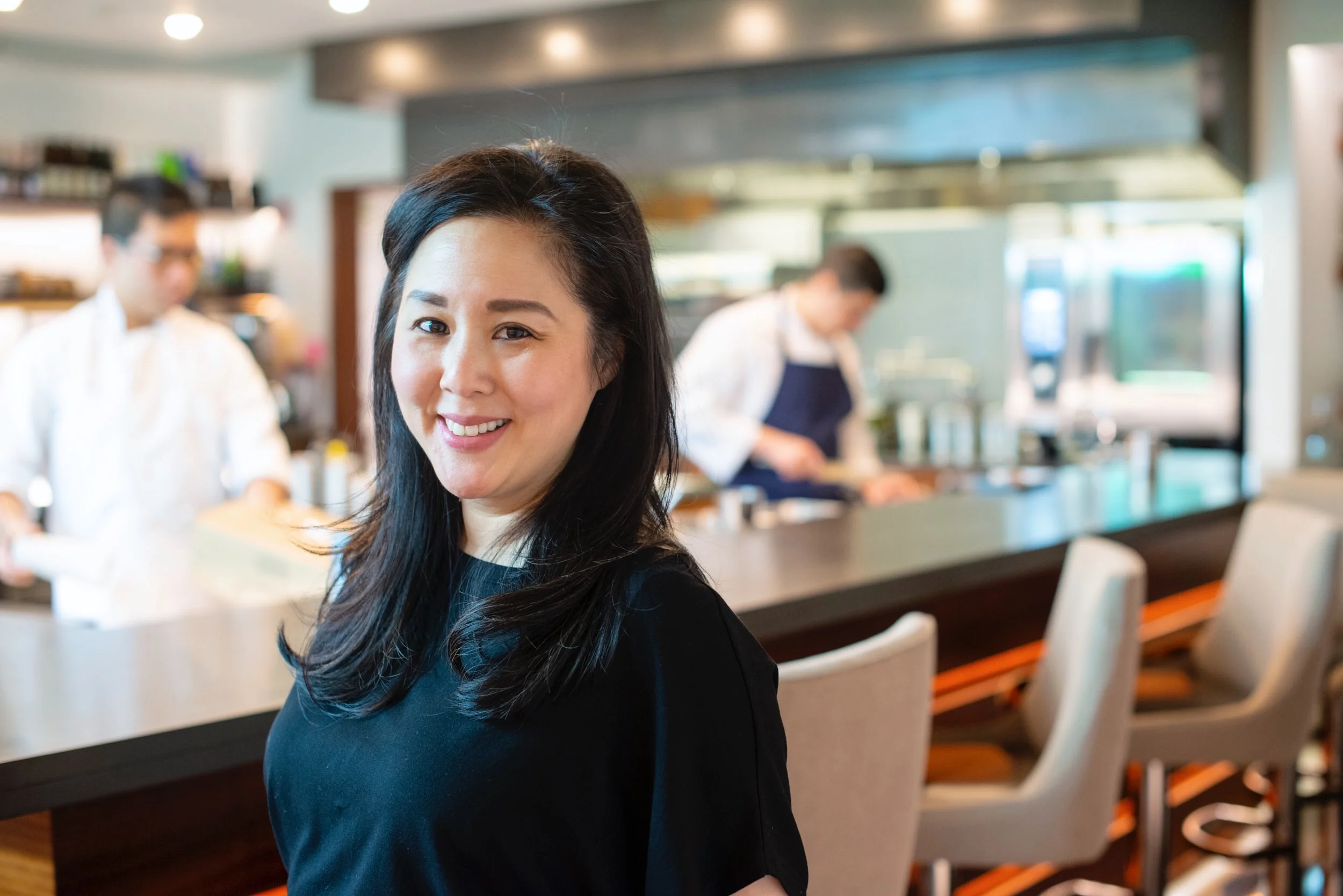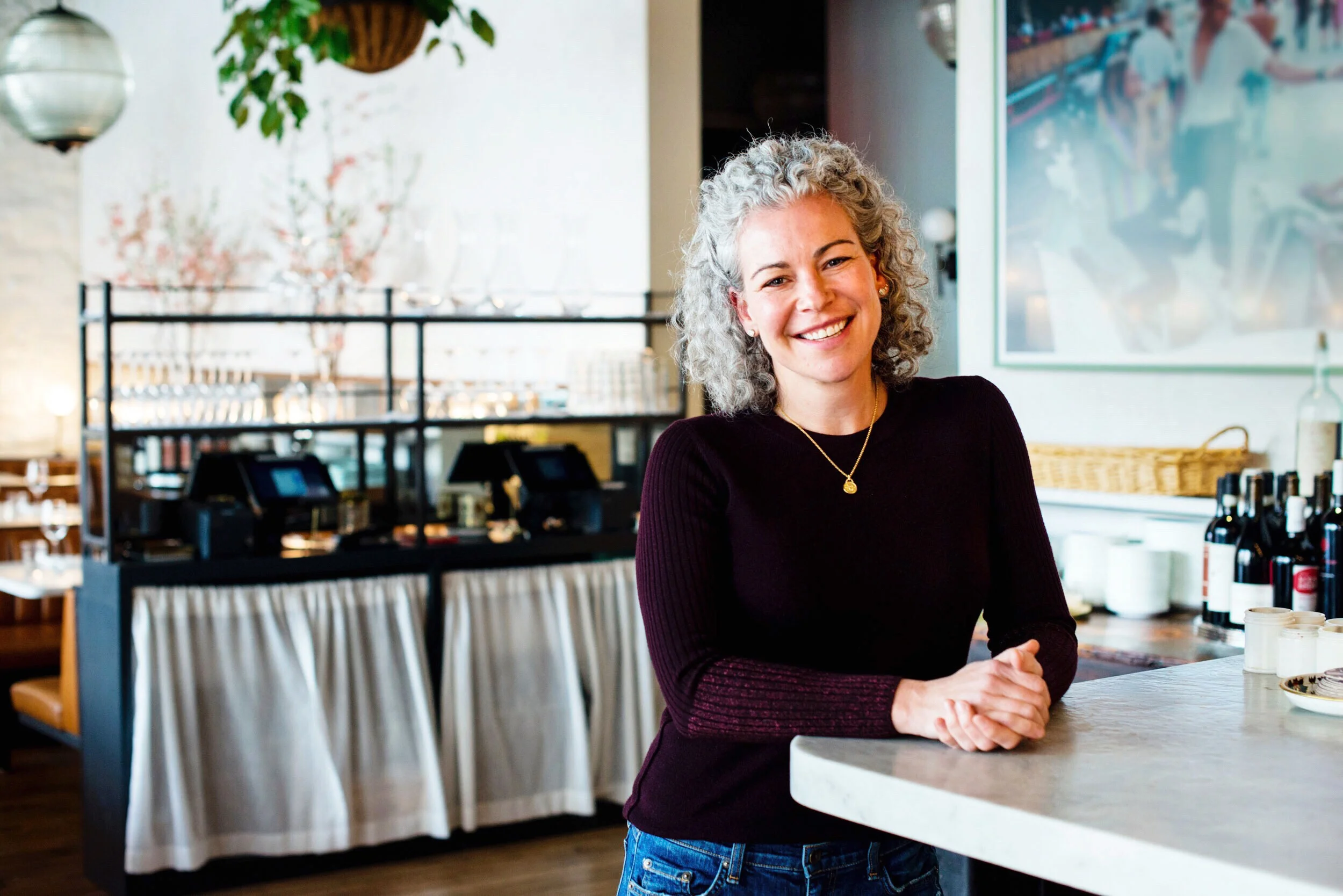Ginhee Ungár

Ginhee Ungár
Photograph by Lydia Carmichael/The Thirty-One Percent
When Ginhee Ungár and her husband started hosting ticketed, multi-course dinners in their own home, she saw it as a side project, while working full-time in the public health sector. However, when the opportunity came for them to transform it into a business, they both jumped at the chance to turn the restaurant business model on its head with Tasting Counter.
Read through Ginhee’s “Five-Year Plan” to learn how it all came together.
Age 20
I took two years off after my sophomore year at Boston University. I moved back home, so when I came back, I graduated and finished up with a major in sociology and a minor in women’s studies. It was also the start of Peter and my relationship––he went to Boston University as well, he was at the hospitality school.
I landed a job at the Massachusetts Department of Health, and I started working with a sexual assault intervention program that trains nurses and physicians on how to collect forensic evidence using what’s commonly known as the rape kit. It’s a holistic approach centered on the patient, and helps to hopefully prosecute offenders. I wanted to have a career that made a difference and had an impact, but I didn’t want to work one-on-one with victims because I’m too impacted by it. Working for a program that was able to have that kind of impact and outreach was really satisfying. We worked with victims from birth on and developed one kit for pediatric and one for adolescents onward. No other state was really doing what we were doing at the time. I did that for 17 years.
Age 25
We moved to Somerville and we purchased a home there. We also started the Dining Alternative.
Peter had been working abroad and he had studied abroad in France while we were dating. He was continuing to further his culinary interests and background, and when he came back, we moved in together. Once we had a house, we started hosting these in-home, multi-course tasting dinners. It was word-of-mouth, and we did them once or twice a month. Guests came from all over the greater Boston area—they heard from others about the dinners, and they’d drive out.
“I got hooked on being able to share that experience with other people. At the end of the night we’d run out of hot water because our dishwasher was turning over so much glassware, pots, and plates, but we somehow made it work.”
We did nine-course dinners with a wine pairing. We had an open floor plan so the kitchen, dining room, and living room was all one space. It was just Peter cooking and he’d have someone in a sous role. I’d help with plating, garnishing, and all the finishing touches. We had a dining room table that we inherited from Peter’s grandparents, and so we were able to accommodate twelve people. Every month, we turned our house literally upside down to do this. We sold tickets through Eventbrite, and they were $150––it was all inclusive for the dinner, the pairings, and we didn’t take tips. We wanted it to be simple and easy. The tenets of Tasting Counter now are rooted in what we did with those dinners. It was called the Dining Alternative at first, and then it morphed into being called Chef’s Table. The guests sitting at the table were essentially eating in our kitchen and Peter would talk about the inspiration behind a dish. That access was really something special for our guests. I got hooked on being able to share that experience with other people. At the end of the night we’d run out of hot water because our dishwasher was turning over so much glassware, pots, and plates, but we somehow made it work. We do see guests time and time again at the restaurant who say they ate at our house ten years ago. We even have two investors that were guests at those dinners.
Age 30
We were doing the dining alternative dinners a little more frequently, maybe three times a month or so. They took so long to prepare for, and they would more than likely be sold out. Peter was really gaining traction, too, but everything was still word-of-mouth––we didn’t advertise at all or anything.
I was still working full-time and we were also raising our two kids at this point. Peter was the stay-at-home dad planning these dinners and thinking about a future restaurant, while I was the primary breadwinner.
Photograph by John Skibbee
Age 35
At 35, we were trying to find locations for the restaurant. Peter spent two years location scouting, and when I had time, I’d come along. Thank goodness I had such a flexible job because there were so many meetings. We were looking in the Fort Point area in the Seaport district because we wanted something in the hustle and bustle of the city. When we started to hear about prices, we realized it would be totally unattainable for us. One day, the mayor of Somerville told Peter to consider opening the restaurant there. It made sense––we live here, our kids go to school here, and it was an up-and-coming neighborhood. Someone mentioned that we should talk to the guys behind the Aeronaut brewing company, they were these three MIT grads who had decided to open up a brewery after being home craft brewers. Peter took a look at the space we’re in now, was intrigued by it, and the rest is history. We signed the lease in 2014.
Age 40
Around 40, I went down to part-time with my job. The intensity increased for me because I was straddling these two worlds, and I had two kids. Juggling was an understatement. We were able to manage with me working part-time for a while––I worked service at night and went to work the next day. Finally, Peter one day said to me that he really needed me at the restaurant more. It was difficult, working at one job for seventeen years with incredible women who had seen me through so many life stages. But to me, I was kind of closing the chapter on one facet of my life and entering this whole new world of being in the hospitality industry.
The restaurant has been bringing in more and more people, but I do really think it’s a word-of-mouth type place, just like those dinners at home. It definitely hits a lot of people who are looking for something a little more unique than a conventional restaurant experience.
Grab your ticket to a one-of-a-kind dining experience by visiting Tasting Counter’s website and get an inside look by following along on Instagram.






